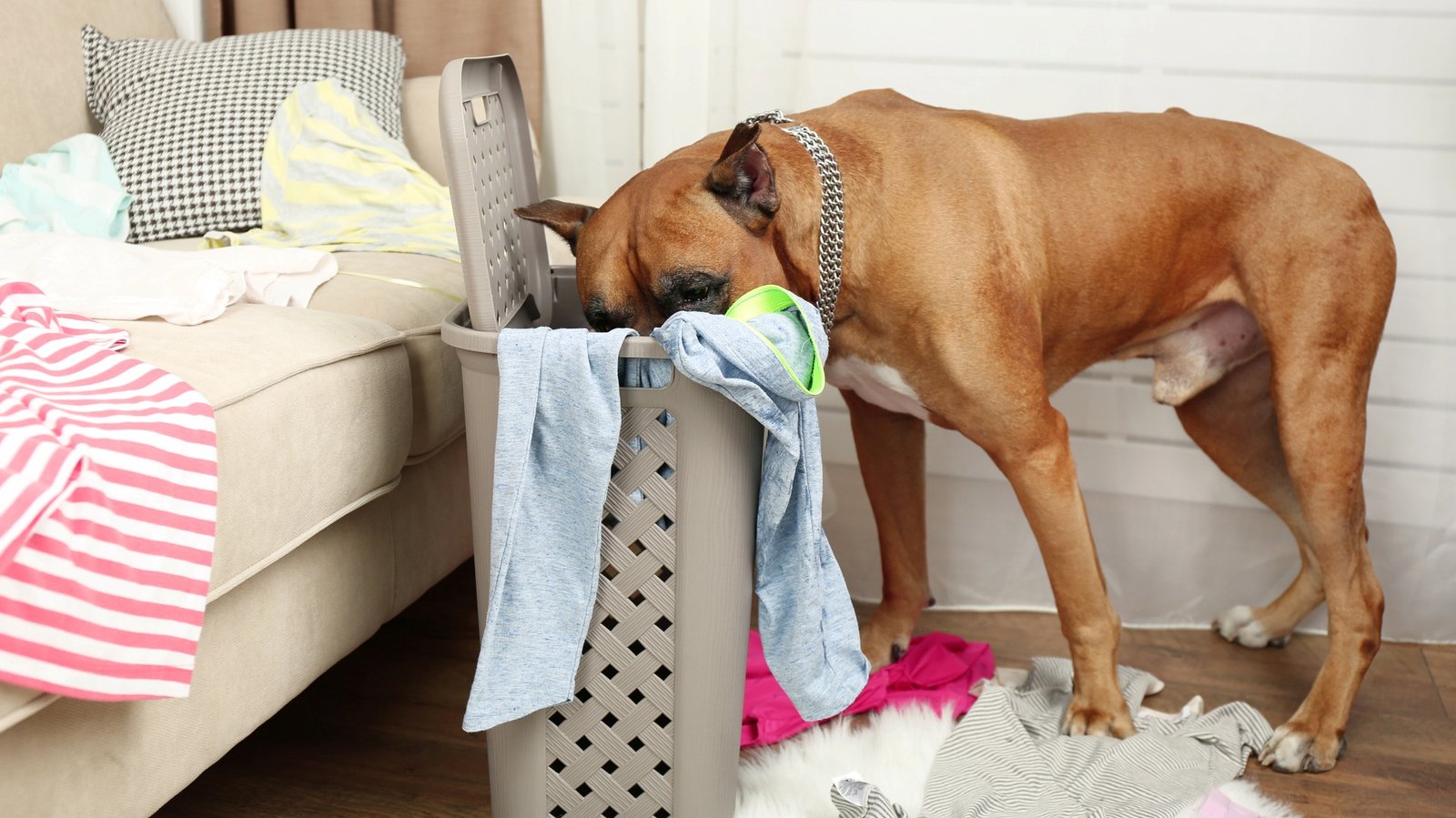Leaving your dog home alone can feel like a guessing game—are they curled up peacefully, or plotting their next chew-toy conquest with your favorite shoes? For every dog lover, finding the right balance between independence and safety for your furry friend is crucial. But did you know there are hidden risks to leaving dogs solo too long that might surprise even the most experienced pet parents? From clever tips to safety must-haves, this guide dives into everything you need to consider before stepping out, so you can keep your dog happy, healthy, and maybe even a little entertained while you’re away.
1. Provide a Safe Space
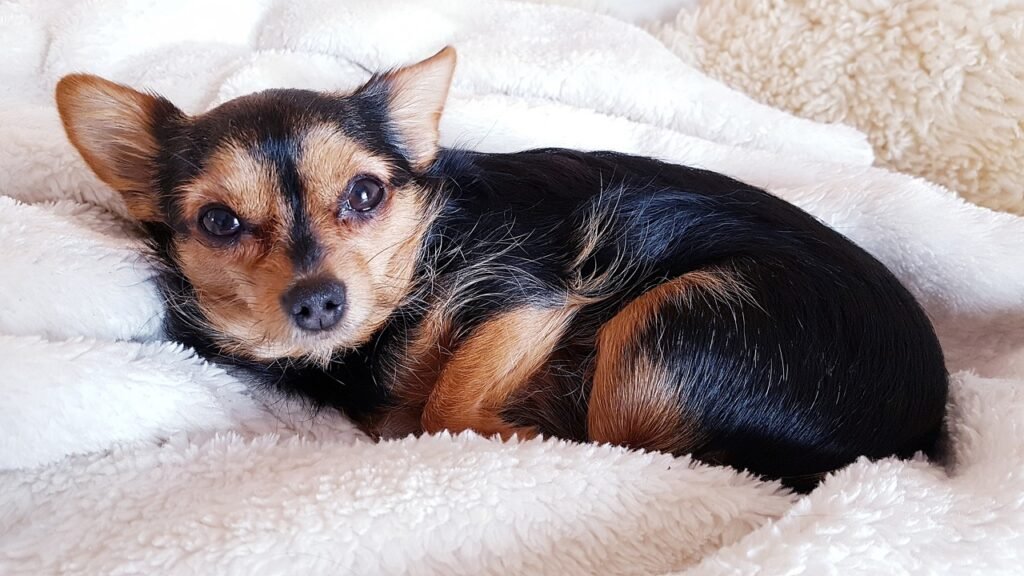
Creating a dedicated area for your dog can keep them feeling calm and comforted when you’re gone. For some dogs, it could be a crate lined with a cozy blanket, others might prefer a crate or a room with a gate that offers a secure, den-like space. If your dog isn’t crate-trained or feels anxious in confined spaces, consider setting up a specific room where they feel at ease. Make sure this area is free of hazards like electric cords, small items they could swallow, or toxic plants. Providing familiar toys and bedding can make the space feel safe and homey, encouraging your dog to relax rather than feel stressed in your absence.
2. Control the Temperature

Dogs are sensitive to temperature extremes, and leaving them in an environment that’s too hot or too cold can be dangerous. If it’s a hot day, ensure there’s proper ventilation, perhaps by setting up a fan or even an air conditioner. Conversely, in colder months, keep the area warm enough for them to be comfortable—especially if your dog has a short coat or is particularly sensitive to cold. Monitor the weather forecast and adjust accordingly, remembering that your dog’s comfort is crucial to their well-being.
3. Leave Fresh Water
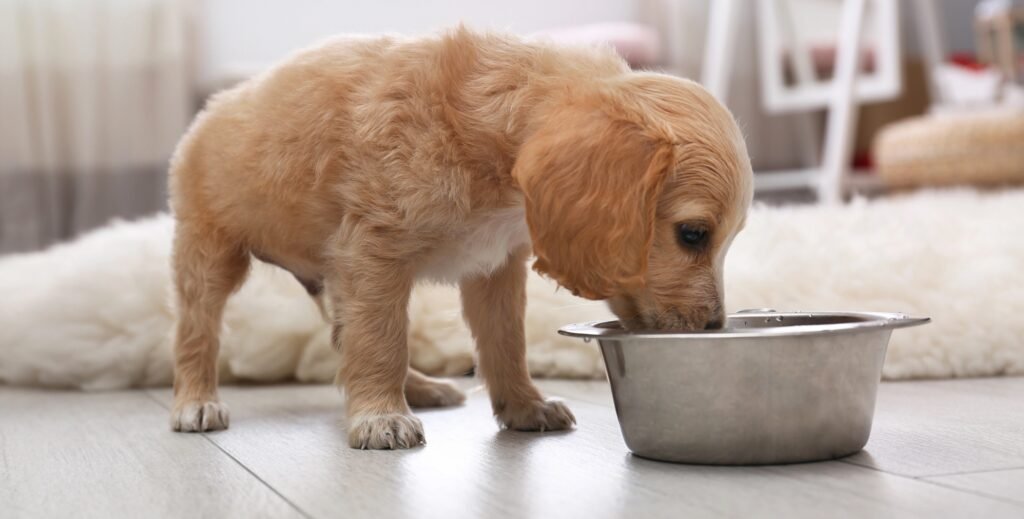
Ensuring that your dog has access to fresh water throughout the day is essential, particularly if you’re going to be gone for an extended period. A spill-proof bowl or an automatic water dispenser is ideal, as dogs can easily tip over standard bowls. These options provide a consistent supply, preventing dehydration and ensuring they have enough to drink if they get warm or thirsty. For very long absences, an automatic water fountain can keep water fresh and encourage them to drink more.
4. Use Background Noise
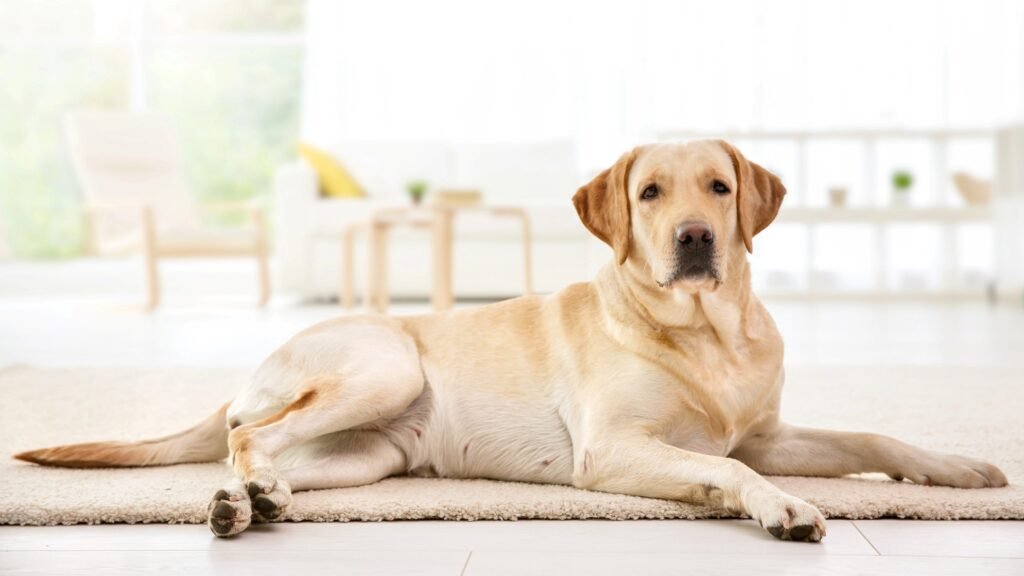
Many dogs find comfort in familiar sounds, which can help mask outdoor noises that might otherwise make them anxious. Leaving on a radio, TV, or white noise machine provides consistent sound, reducing their likelihood of reacting to external noises like passing cars or barking dogs. For especially anxious dogs, consider calming music specifically designed for pets, which has been shown to help reduce stress and create a peaceful atmosphere.
5. Offer Interactive Toys
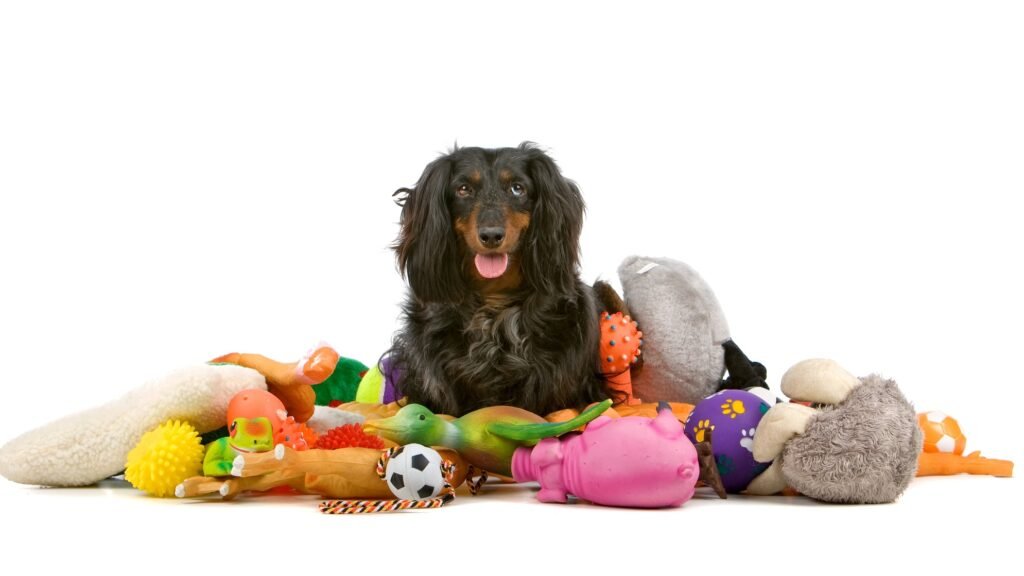
Keeping your dog mentally stimulated while you’re away is just as important as keeping them physically comfortable. Interactive toys, like puzzle feeders or treat-dispensing balls, give them a fun challenge and keep them busy for a while. The Kong, for example, can be filled with peanut butter, yogurt, or special dog-safe fillings that they must work to get out, giving them a satisfying activity that distracts from boredom and anxiety. Rotating these toys every few days can also keep them fresh and interesting. Keep different toys for your dog to play with as dogs get bored with the same toys.
6. Avoid Overly Emotional Goodbyes

Dogs pick up on our emotions, and a long, dramatic goodbye can make them more anxious after you leave. To help reduce separation anxiety, try to keep departures calm and casual. Instead of giving them lots of attention right before you walk out the door, try ignoring them for a few minutes before leaving. This way, leaving becomes part of their routine, and they are less likely to experience the emotional rollercoaster of a big goodbye. However, in a secure dog, a short reassuring and friendly goodbye is ok.
7. Give Plenty of Exercise Beforehand
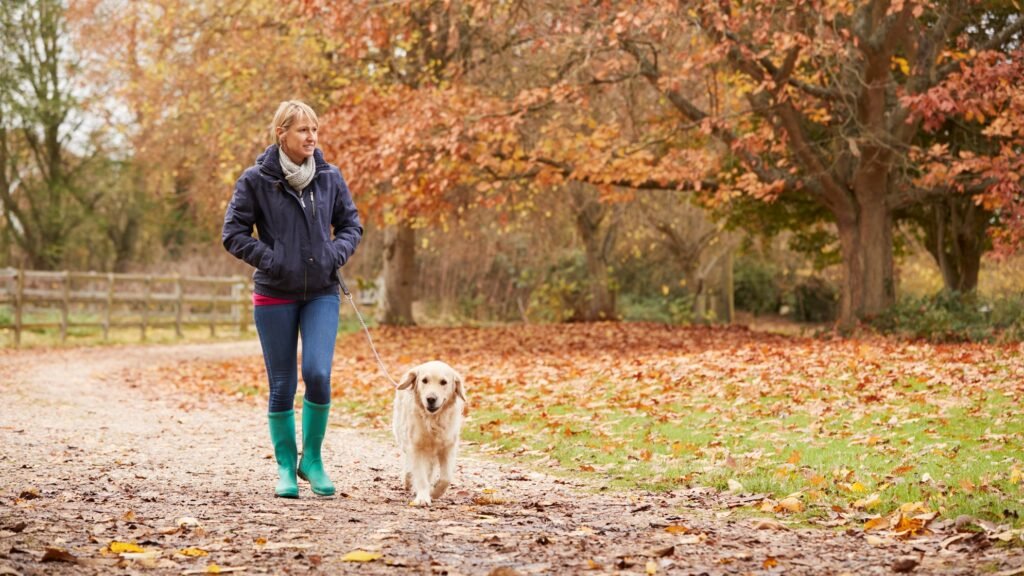
Taking your dog for a brisk walk or engaging them in a play session before you leave can help them burn off energy and reduce restlessness while you’re gone. Physical activity releases endorphins and can calm them down, making it easier for them to settle and rest after you leave. For high-energy dogs, extra playtime with toys like balls or Frisbees can be especially beneficial.
8. Consider Their Age and Health Needs

Puppies and senior dogs often require extra care and supervision, while dogs with specific health issues may need more frequent bathroom breaks, medication, or food at certain intervals. Make a checklist of any special requirements and arrange for additional support if needed, whether that means a friend stopping by, an automatic feeder, or specific steps to ensure their comfort.
9. Set Up a Monitoring System

Pet cameras are popular and allow pet owners to monitor their dogs remotely. Some cameras even include two-way audio, so you can reassure your dog if they seem anxious or restless. These are great for your peace of mind knowing your pet is safe.
10. Puppy-Proof Your Home
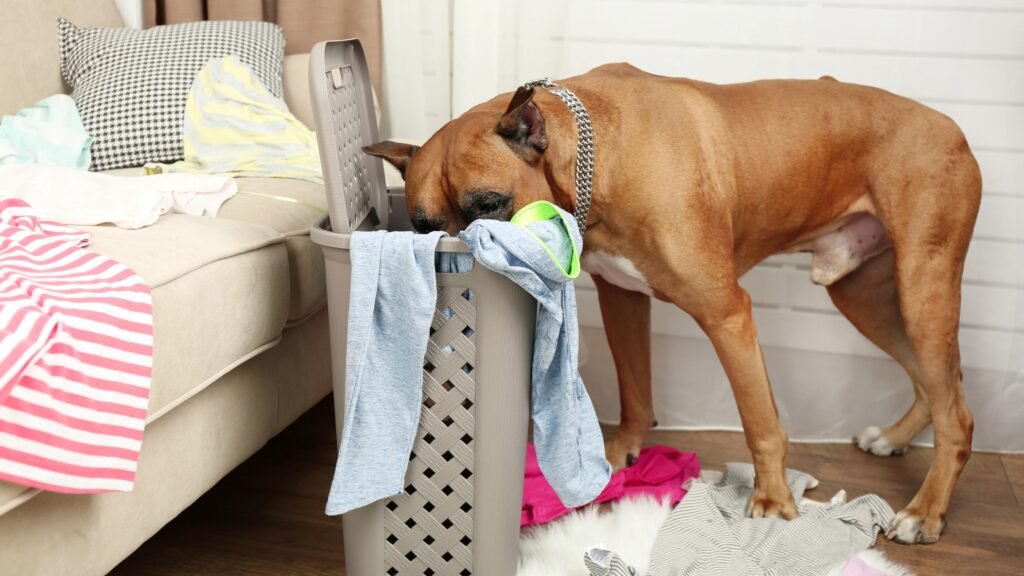
Puppy-proofing your home is essential, especially for curious dogs. Remove access to things like shoes, remote controls, or books that might be tempting, as well as trash bins that could contain dangerous items like leftover food or sharp objects. Try and block off access to potentially dangerous areas, like stairways or balconies. Removing hazards, securing cords, and making sure they don’t have access to harmful household items can prevent accidents and keep them safe.
11. Start with Short Departures
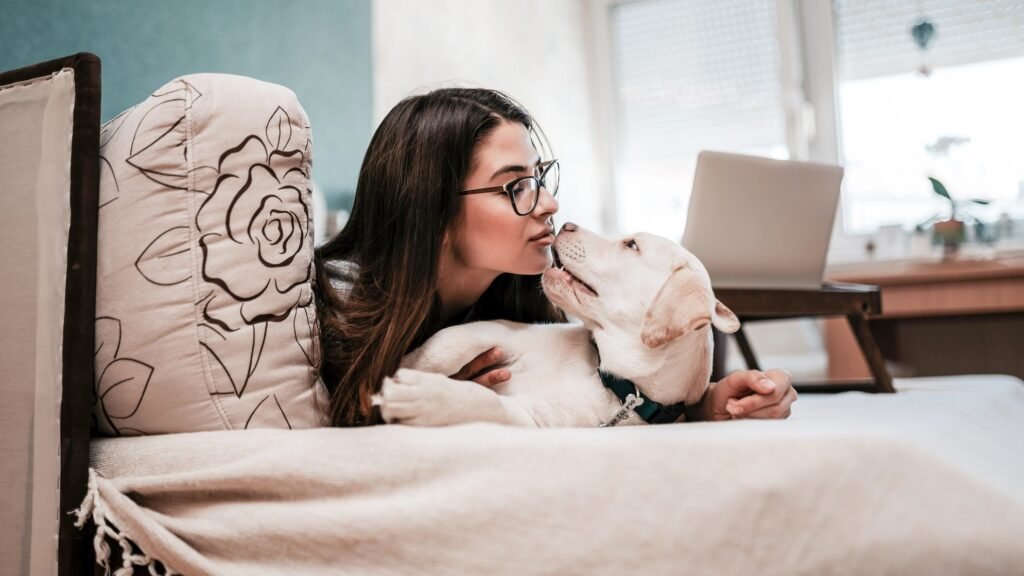
If your dog isn’t used to being left alone, gradually building up their tolerance can help reduce separation anxiety. Start by leaving for short periods and then gradually increase the time as they become more comfortable. Praise or reward them when you return if they’ve been calm and relaxed, reinforcing that being alone isn’t something to worry about.
12. A Calming Aid
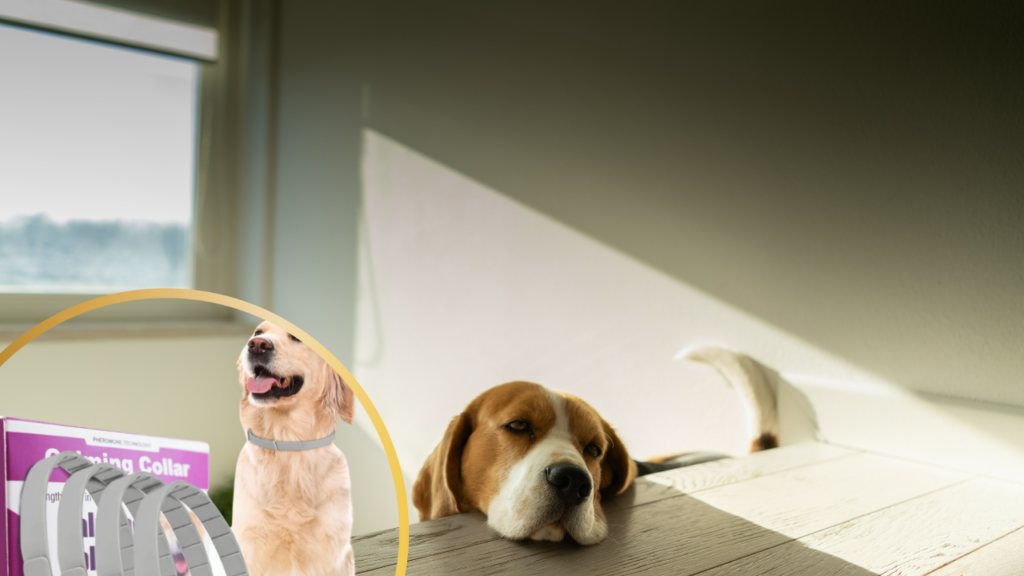
For dogs prone to separation anxiety, calming aids can make a world of difference. Calming collars, sprays, or supplements with natural ingredients like lavender or chamomile can help them relax. Some dogs find comfort in anxiety wraps or vests, which apply gentle pressure to create a sense of security. For severe anxiety, consult your vet about other options, including possible medications to ease stress.
13. A Room with a View

Dogs love to observe their surroundings, and having a view outside adds a dash of excitement to their day. Whether they’re watching birds flutter around, people strolling by, or simply keeping an eye on changing weather, a window can provide both mental stimulation and entertainment while you’re away. Just make sure the window is secure and that there are no tempting objects nearby they could accidentally knock over.
While dogs can handle some alone time, avoid leaving them alone too long. Consider a family friend or relative to check in or take care of your dog if your absence will be a long one. If you’re unable to arrange a visitor, you could consider a doggy daycare where they can socialize and play under supervision. Taking these steps can help make sure that your dog feels secure and comfortable when left alone, allowing you both to enjoy a more relaxed, happy routine.

Andrew Alpin from India is the Brand Manager of Doggo digest. Andrew is an experienced content specialist and social media manager with a passion for writing. His forte includes health and wellness, Travel, Animals, and Nature. A nature nomad, Andrew is obsessed with mountains and loves high-altitude trekking. He has been on several Himalayan treks in India including the Everest Base Camp in Nepal.

